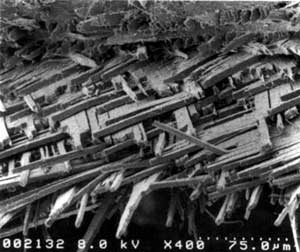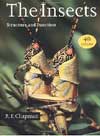Integument
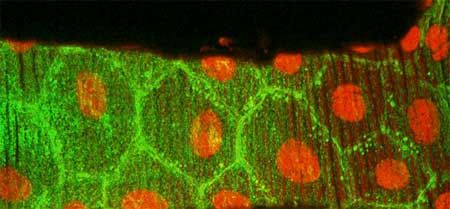
Objectives
At the end of this topic you will:
- describe the structure and function of the insect integument
- describe the types and functions of variations in cuticle composition and form
- know about types of gland cells
- know about silks and other secretions
Topic outline
- Integument Part 1:Structure of and function of cuticle/exoskeleton; Modifications of cuticle: Sclerotization, Colours, Additives, Surface Modifications
- Integument Part 2: Glands; Silks & Secretions, Labial silks, other silks
Activities
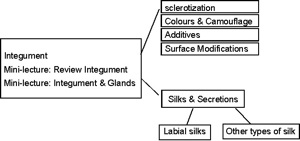
- Listen to the introductory mini-lecture on Insect Cuticle. (It is also presented as part of the course, BIOL2205, Insect Science.)
- Additional mini-lectures expand on the topics of modification of cuticle
- Mini-lecture: Insect Glands
- Mini-lecture: Insect Silks
Part 1: Structure and function
|
download video file (m4v) 20MB |
Structure of the Cuticle
The integument is a collective term that incorporates the single layer of cells below the cuticle called the epidermis plus the cuticle (cuticle + epidermis = integument).
The epidermis secretes the cuticle.
The procuticle may be differentiated into an endo- and an exocuticle.
It is overlaid by an epicuticle.
Dermal glands and wax filaments extend upwards through the cuticle.
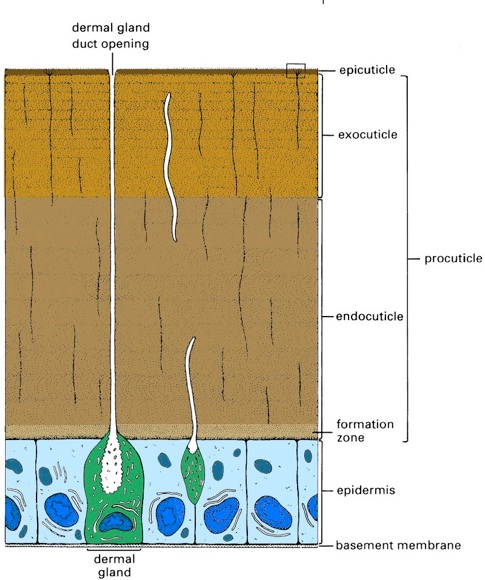
[Modified from Gullan & Cranston, 3rd edition, Fig. 2.1]
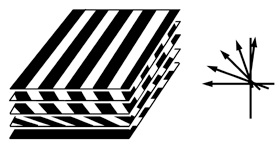 |
Freeze-fractured cuticle of a weevil showing different orientations of successive layers of microfibrils. Image: with permission R. Giblin-Davis. From: Insect Physiology & Biochemistry, James L. Nation |
Cuticle is made up of chitin microfibrils. |
|
|
Function of the cuticle/exoskeleton
The cuticle has a number of general functions. It can:
|
Movie: From NatureTech, Smithsonian Channel |
Modifications of the of the cuticle
 |
Image: Richard Bartz Wikimedia Common |
 |
Image: Bresson Thomas Wikimedia Commons |
 |
Image: Richard Bartz Wikimedia Common |
 |
Image: Richard Bartz Wikimedia Common |
Insect cuticle is providing a model for artificial materials in an area called biomimetics. Biomimetic materials are artificial products that mimic the attributes of natural products, from plants or animals including types of insect cuticle.
- copying the structure of insects’ “foot pads” that allows them to walk on the ceiling
- making flexible cuticle in the laboratory by first producing artificial versions of cuticle proteins and then cross-linking them to make a rubber-like material
- copying the structure of cuticular surface sculpting that produces the brilliant “interference” colours


 Mini-lecture:
Mini-lecture: